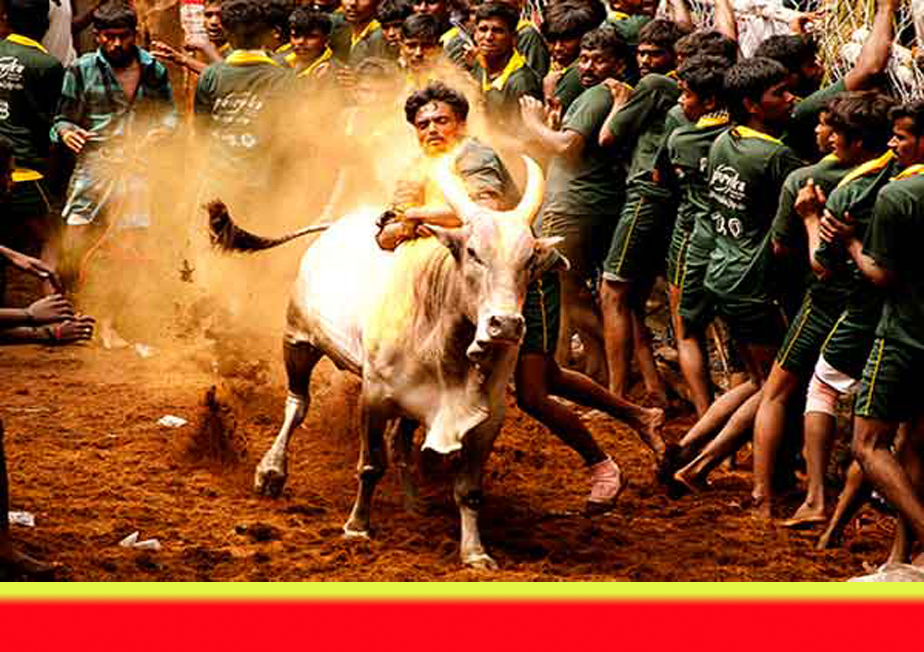

Jallikattu

In Ancient times, two bullfighting and bull-racing sports were conducted. 1.Manjuvirattu and 2. Yeruthazhuval. These sports were organised to keep the people’s temperament always fit and ready for the war at any time. Each has its own techniques and rules. These sports acted as one of the criteria to marry girls of warrior family. There were traditions where the winner would be chosen as bridegroom for their daughter or sister.
Mr. Gandhirajan, who is a post-graduate in Art History from Madurai-Kamaraj University, said the ancient Tamil tradition was “manju virattu” chasing bulls or “eruthu kattuthal” lassoing bulls and it was never “jallikattu,” that is baiting a bull or controlling it as the custom obtained today. In ancient Tamil country, during the harvest festival, decorated bulls would be let loose on the “peru vazhi” highway and the village youth would take pride in chasing them and outrunning them. Women, elders and children would watch the fun from the sidelines of the “peru vazhi” or streets. Nobody was injured in this. Or the village youth would take delight in lassoing the sprinting bulls with “vadam” rope.
It was about 500 years ago, after the advent of the Nayak rule in Tamil Nadu with its Telugu rulers and chieftains, that this harmless bull-chasing sport metamorphosed into “jallikattu,” said Mr. Gandhirajan.
The ancient Tamil art of unarmed bullfighting, popular amongst warriors in the classical period, has also survived in parts of Tamil Nadu, notably Alanganallur near Madurai, where it is known as Jallikattu and is held once a year around the time of the Pongal festival.
Full articles can be seen on the link below.
![]()
2017 சல்லிக்கட்டு ஆதரவு போராட்டங்கள்